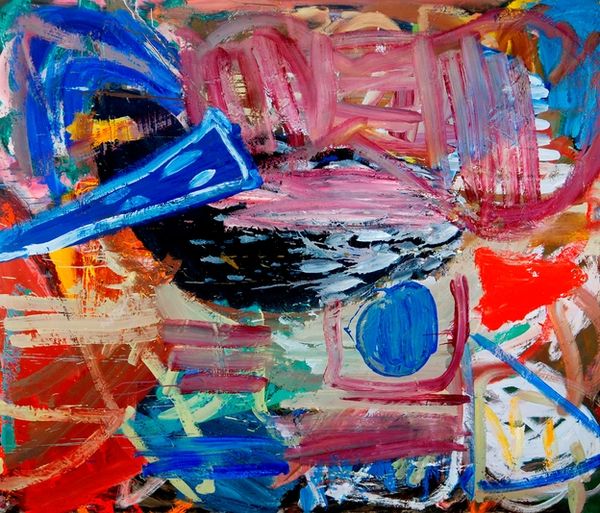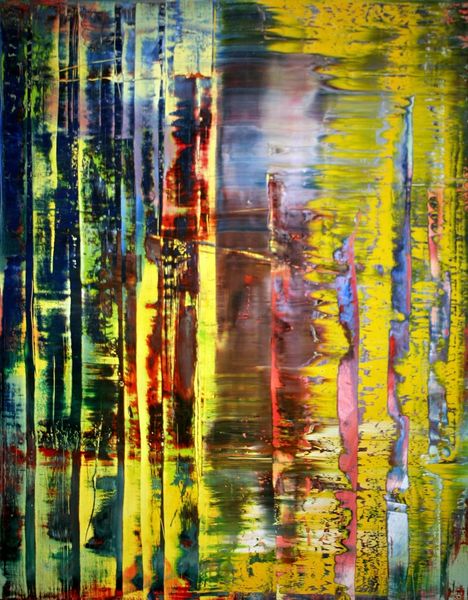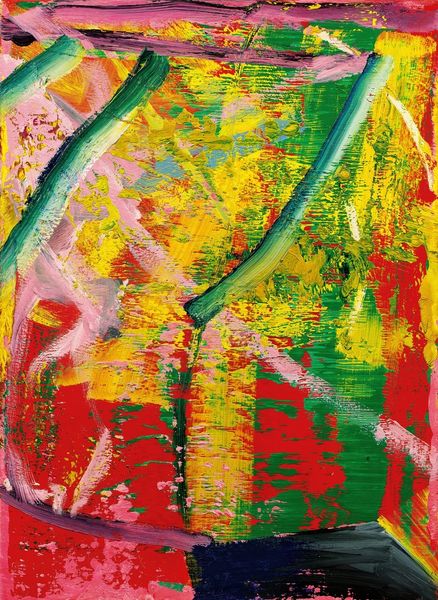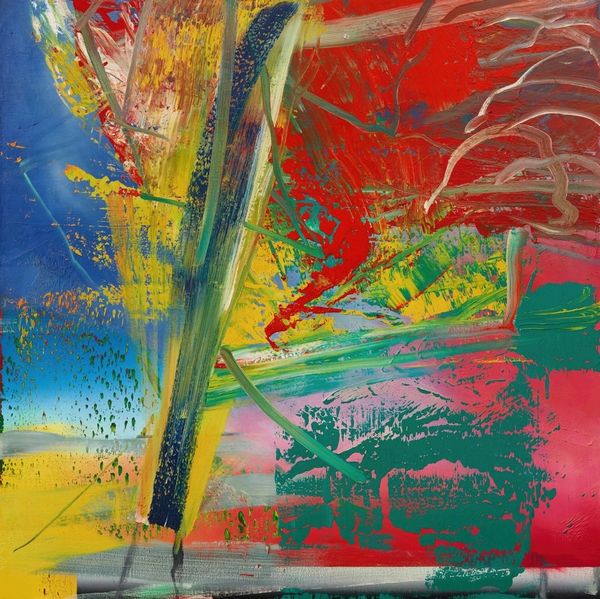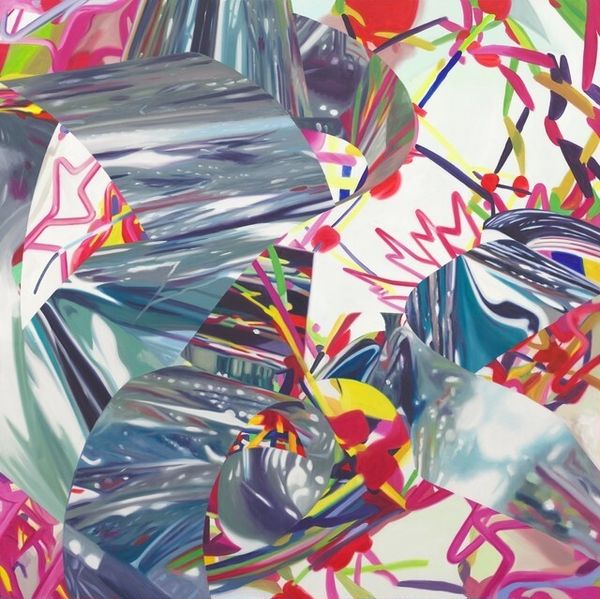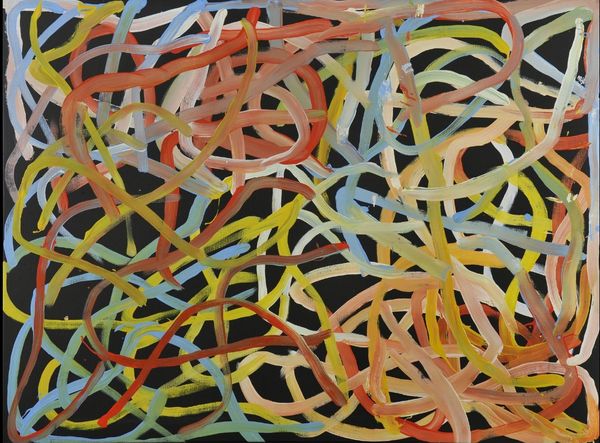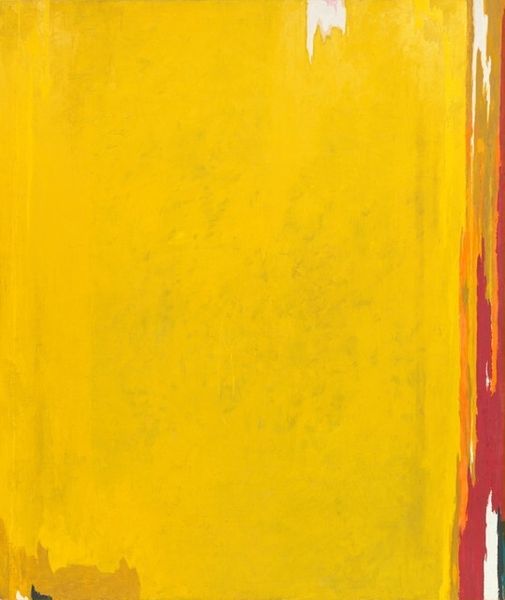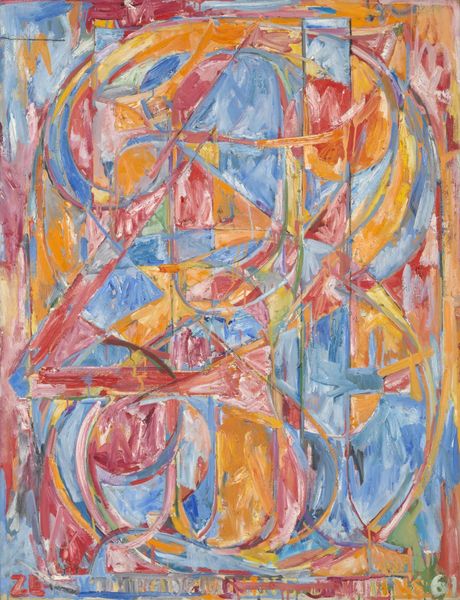
Copyright: Janet Fish,Fair Use
Editor: Here we have Janet Fish's 1973 oil painting, *Kraft Salad Dressing.* There's something so compelling about elevating these everyday objects into art. How do you interpret this work, with its focus on such familiar items? Curator: The symbolism is layered, isn't it? Consider the ubiquitous nature of these brands, reflecting postwar consumer culture, and specifically the rise of processed foods. This feels like cultural commentary on how we consume and what we value. Does the repetition remind you of anything? Editor: It definitely has echoes of Pop Art, maybe Warhol's soup cans. Curator: Precisely! Fish updates the still life tradition for the modern era. But look closer, beyond the branding. These glass bottles, reflecting light and distorting shapes, possess a fragile beauty. Consider glass, in art, and throughout history – how it represents transparency, but also illusion. Do you see the tension between consumerism and artistry? Editor: Yes, it’s a powerful juxtaposition. The textures and colors are beautiful, but then you're reminded it's salad dressing. Curator: It prompts us to ask: What images saturate our lives and shape our desires? These commercial images become ingrained in our cultural memory. Why do you think Fish selected salad dressing bottles as her subject? Editor: Maybe it was just accessible. Or maybe because the variety hints at a broader spectrum of choices in the modern supermarket. Curator: Exactly! Fish captures this modern cornucopia of industrial goods in the traditional artistic genre of a still life painting, echoing earlier images of power, status, and plenty. I found myself reconsidering the everyday symbols that silently influence our understanding of the world. What was your biggest takeaway? Editor: Seeing how ordinary objects, these familiar bottles, can carry so much meaning about our society and its values, expressed in the details of light, color, and composition.
Comments
No comments
Be the first to comment and join the conversation on the ultimate creative platform.
